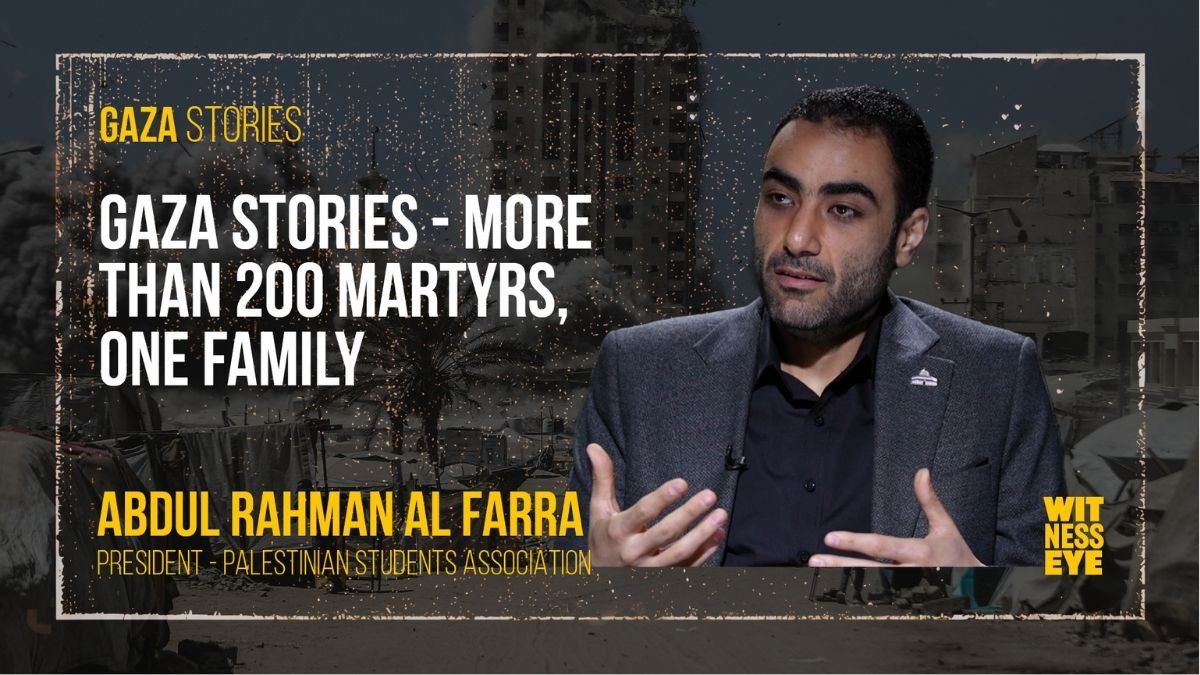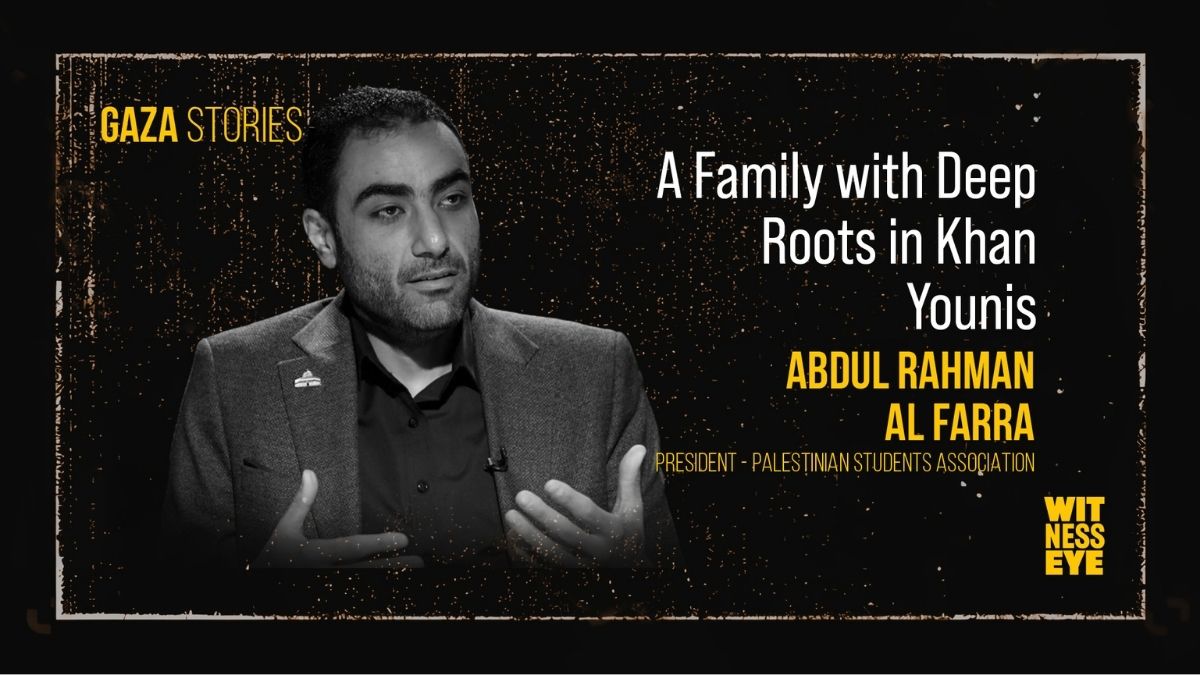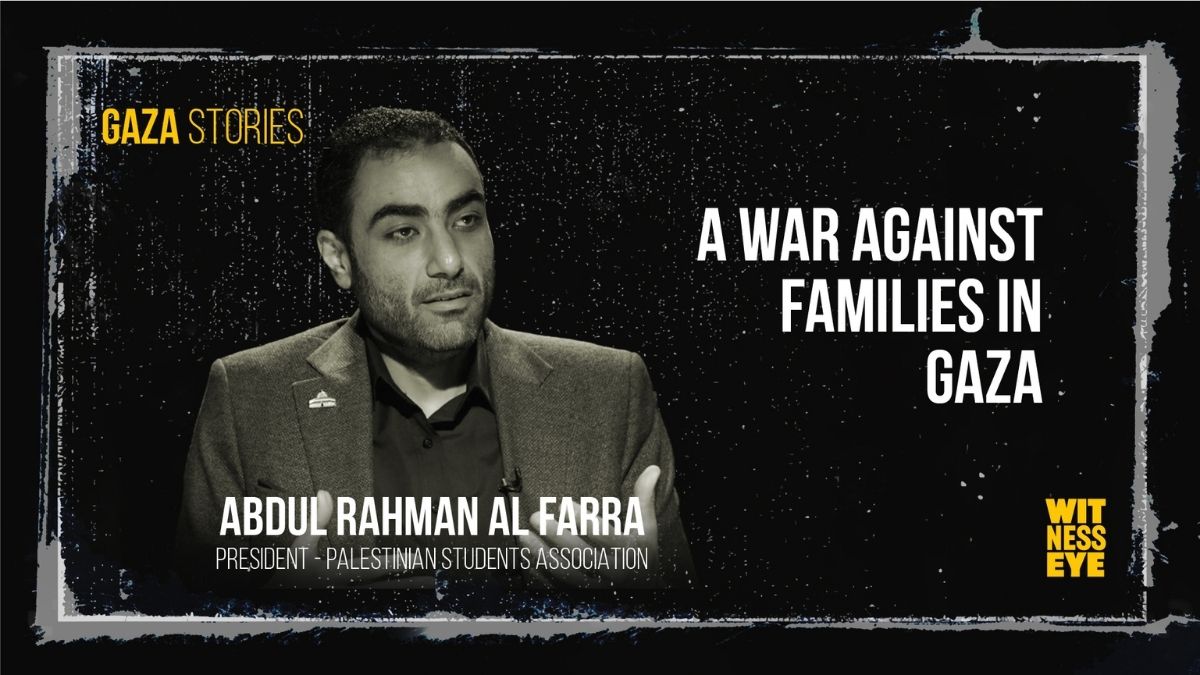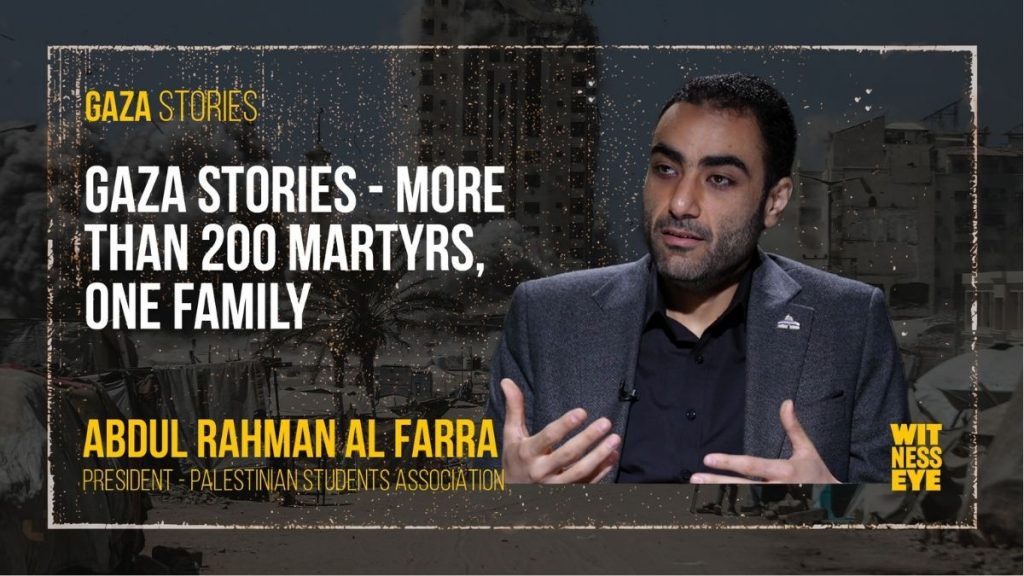
When Dr. Abdul Rahman Al-Farra speaks, his voice carries both memory and mourning. “They targeted us at home, and they targeted us in the tents,” he recalls. “It was not just destruction. It was extermination.” His words are part of a growing body of Gaza Stories—living testimonies that reveal the deliberate targeting of Palestinian families, entire lineages uprooted, and generations lost under the bombs. The Al-Farra family, rooted deeply in the city of Khan Younis, is not only a large and historic clan. They are a symbol of resilience and identity. Yet in the current Gaza War, they became a target in what survivors describe as a war of extermination.

A Family with Deep Roots in Khan Younis
The Al-Farra family is one of Khan Younis’ founding families, present for generations, shaping local governance and community life. “We were among the families that established the municipality,” Dr. Al-Farra explains. “For decades, members of our family served as leaders and educators. We were proud of our history.” Neighborhoods like Al-Farra block in downtown, or family clusters in Al-Qarara and Ma’an, carried the name proudly. A family council elected by its members organized social life, celebrated students’ graduations, and upheld traditions. “Our graduation ceremony was an example of unity,” he says, “funded by the family, organized by the family, honoring the family’s children.”
That proud tradition was shattered. When bombs fell on Khan Younis, those family gatherings turned into mourning halls. The records of the dead, documented through Civilian Casualty Mapping, tell the story: more than 210 martyrs from the Al-Farra family in less than two years.

A War Against Families in Gaza
“What happened to us was not accidental,” Dr. Al-Farra insists. “This is deliberate targeting, extermination of families.”
Entire homes were leveled in crimes against humanity that struck not only buildings but the very notion of family. In one night, 23 members of the Al-Farra family were killed in a single strike.
Among them was Dr. Muntaser Al-Farra, head of the pediatric care department at Gaza European Hospital. “He lived in the hospital, day and night, helping children,” his cousin recalls. “Colleagues begged him to rest. The night he finally went home, the house was bombed with his family inside. His smile used to heal wounds. That night, the doctor’s hands were stilled forever by Israel’s ruthless crime.
The attacks, documented in War Crimes Documentation, showed patterns: simultaneous strikes on both houses and tents, eliminating any chance of survival. “If you were at home, you were killed. If you fled to a tent, you were killed. This was extermination.” Such destruction is not only physical. It tears apart social fabric. It creates thousands of Gaza’s Missing, people unaccounted for, their stories lingering in silence. Witness Eye has previously reported on this shadow of war in Gaza’s Missing – Thousands Lost in the Shadow of War.

Gaza: A 14-Year-Old Girl’s Cry No Ambulance Could Answer
Behind every number is a name, a face, a family. This is why Eyewitness Testimonies remain crucial.
One testimony comes from a girl, just 14, calling relatives after a bombing: “Please, send an ambulance. Daddy is bleeding in front of us. My brothers are dead. Daddy is still alive.” Ambulances could not reach them; tanks had surrounded the neighborhood. “
That moment broke us,” says Dr. Al-Farra. “Her words were a cry into the void. Even paramedics couldn’t move. What danger could they have seen in a family home to justify that?” Such testimonies are preserved in the Digital Evidence Archive, forming part of the growing case files for Gaza Tribunal proceedings. Each detail matters: the time, the location, the names, the pattern of attacks.
Gazan Students in Exile: A Different Kind of Orphaning
Dr. Abdul Rahman is not only a survivor but also president of the Palestinian Students Association in Turkey. His role has placed him close to young Palestinians forced to witness their families’ destruction from afar.
“Imagine being 18, studying abroad, and suddenly hearing your entire family was wiped out in Gaza,” he says. “We have students fainting during lectures when news of martyrdom arrives. Some lose the will to continue. We must hold them, comfort them, guide them.”
These stories echo those of Gaza justice: the burden of surviving when everything familiar has been erased. The association has become more than an organization—it has become a family. “We hold mourning gatherings instead of academic debates,” he explains. “We console instead of celebrating, carry each other.”
This is part of the broader tapestry of Stories of Survival, as Palestinians abroad struggle with the same trauma, connected to Gaza by memory, blood, and daily grief.

International Law Meets Political Will — Justice Blocked
The deliberate targeting of families like Al-Farra falls under violations of International Humanitarian Law. Yet survivors ask: where is international justice?
“Our voice has reached the world,” Dr. Al-Farra explains. “The problem is not awareness. The problem is political will. The world sees everything, yet action is blocked by power.”
International courts, tribunals, and human rights organizations gather Genocide Evidence Files and open Legal Accountability Cases. Yet families continue to vanish. Netanyahu, named in several legal petitions, is still received by Western governments as an honored guest, underscoring the gap between truth and politics.
Witness Eye has previously reported on the Bosnia public session of the Gaza Tribunal, where survivors demanded accountability. Those sessions, combined with the growing Forensic Investigations and Military Conduct Analysis, aim to hold perpetrators accountable.
Gaza Tribunal: A Path Toward Justice
The ongoing work of the Gaza Tribunal collects testimonies, expert analyses, and archival material. “Justice exists everywhere,” Dr. Al-Farra says. “But it needs the courage of people to demand it, to stand by it, to not look away.” Reports such as the Gaza Tribunal Evidence and Gaza Tribunal Reports build a foundation. Survivors like Dr. Al-Farra provide the human truth that statistics alone cannot convey.
The massacre of the Al-Farra family is not just a number in a report. It is part of a deliberate attempt to erase memory. Yet by telling these stories, survivors resist. This article itself joins the Accountability Watchlist, documenting patterns of human rights violations in Gaza. It is part of the broader archive of Witness Eye, which records truth against attempts at silence.
“Behind every martyr is a story,” Dr. Al-Farra reminds us. “Two hundred martyrs means two hundred stories. That’s why I speak—to honor them.”
Through Testimony, Gaza Refuses Erasure
The Al-Farra story is both unique and tragically common. It sits beside the story of Dr. Rinad al-Majdalawi, who lost 90 family members. It echoes the testimonies in A Mother’s Last Words and the pleas of survivors documented in A Test for Humanity.
This is what Gaza Stories means: memory against erasure, testimony against silence, justice against impunity.
The path ahead runs through law, documentation, and international solidarity. It runs through students abroad holding each other up when their families are gone. It runs through archives, through courts, through streets where people chant for Palestine.
And it runs through the simple act of telling the truth:
“They wanted to erase us,” Dr. Al-Farra says, his voice steady despite the weight of memory.
“But as long as we tell our story, we live.”
Published By Besa Witness Eye
Stay Connected with Witness Eye
Follow us on our official channels:
